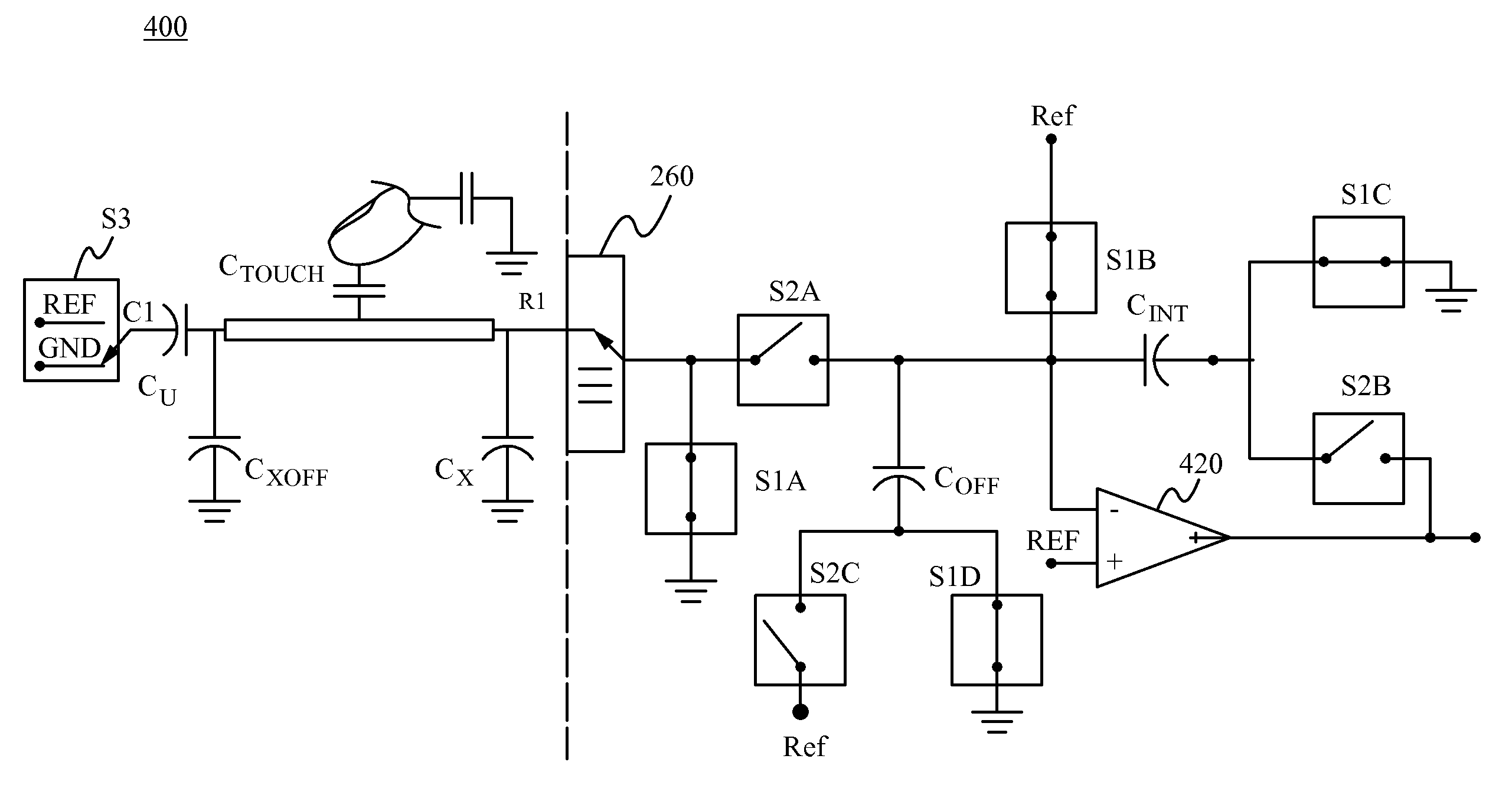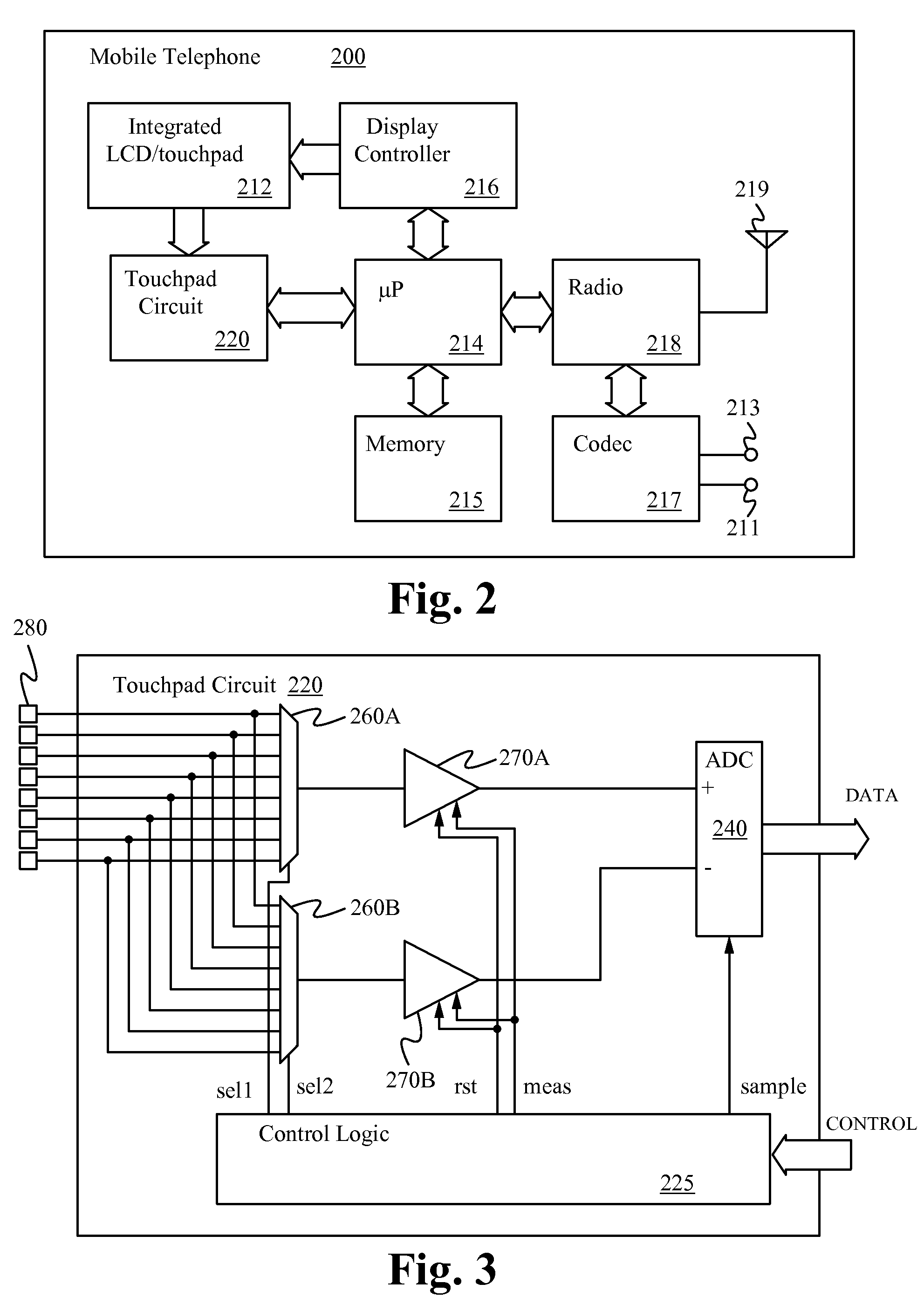System for and method of transferring charge to convert capacitance to voltage for touchscreen controllers
a touchscreen controller and capacitance conversion technology, applied in the field of human-to-machine interfaces, can solve the problems of reducing the maximum frame rate that can be supported, increasing latency, and reducing the signal-to-noise ratio, so as to reduce the requirement of offset canceling capacitance.
- Summary
- Abstract
- Description
- Claims
- Application Information
AI Technical Summary
Benefits of technology
Problems solved by technology
Method used
Image
Examples
Embodiment Construction
[0028]The present invention encompasses techniques for reducing or eliminating error in the output of capacitive sensor arrays such as touchpads, touchscreens, touch sliders and the like, including sensors that detect the presence and position of a stylus, as well as those that detect and determine finger position. While the illustrative embodiment described herein is applied in a mobile telephone, it is understood that capacitive touch sensors are used in a wide variety of devices. Examples of such devices are portable devices, such as personal digital assistants (PDA5), global positioning systems (GPS) receivers, as well as larger devices such as touchscreen enabled displays and computer systems, as well as appliances.
[0029]Referring now to FIG. 2, a mobile telephone 200 in accordance with one embodiment of the present invention is shown. The mobile telephone 200 includes a microprocessor (μP) 214 coupled to a memory 215 that stores program instructions for execution by the microp...
PUM
 Login to View More
Login to View More Abstract
Description
Claims
Application Information
 Login to View More
Login to View More - R&D
- Intellectual Property
- Life Sciences
- Materials
- Tech Scout
- Unparalleled Data Quality
- Higher Quality Content
- 60% Fewer Hallucinations
Browse by: Latest US Patents, China's latest patents, Technical Efficacy Thesaurus, Application Domain, Technology Topic, Popular Technical Reports.
© 2025 PatSnap. All rights reserved.Legal|Privacy policy|Modern Slavery Act Transparency Statement|Sitemap|About US| Contact US: help@patsnap.com



